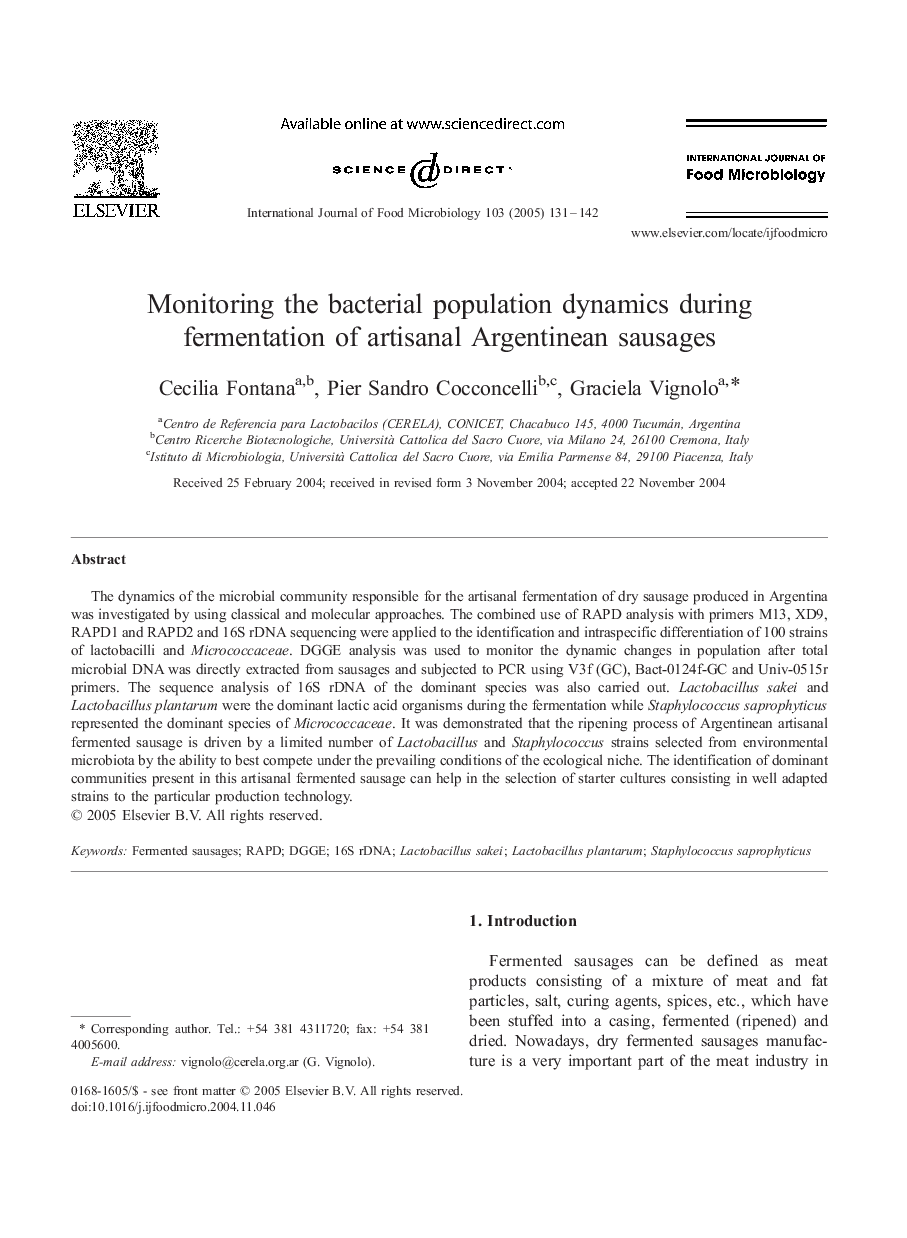| Article ID | Journal | Published Year | Pages | File Type |
|---|---|---|---|---|
| 10107324 | International Journal of Food Microbiology | 2005 | 12 Pages |
Abstract
The dynamics of the microbial community responsible for the artisanal fermentation of dry sausage produced in Argentina was investigated by using classical and molecular approaches. The combined use of RAPD analysis with primers M13, XD9, RAPD1 and RAPD2 and 16S rDNA sequencing were applied to the identification and intraspecific differentiation of 100 strains of lactobacilli and Micrococcaceae. DGGE analysis was used to monitor the dynamic changes in population after total microbial DNA was directly extracted from sausages and subjected to PCR using V3f (GC), Bact-0124f-GC and Univ-0515r primers. The sequence analysis of 16S rDNA of the dominant species was also carried out. Lactobacillus sakei and Lactobacillus plantarum were the dominant lactic acid organisms during the fermentation while Staphylococcus saprophyticus represented the dominant species of Micrococcaceae. It was demonstrated that the ripening process of Argentinean artisanal fermented sausage is driven by a limited number of Lactobacillus and Staphylococcus strains selected from environmental microbiota by the ability to best compete under the prevailing conditions of the ecological niche. The identification of dominant communities present in this artisanal fermented sausage can help in the selection of starter cultures consisting in well adapted strains to the particular production technology.
Keywords
Related Topics
Life Sciences
Agricultural and Biological Sciences
Food Science
Authors
Cecilia Fontana, Pier Sandro Cocconcelli, Graciela Vignolo,
